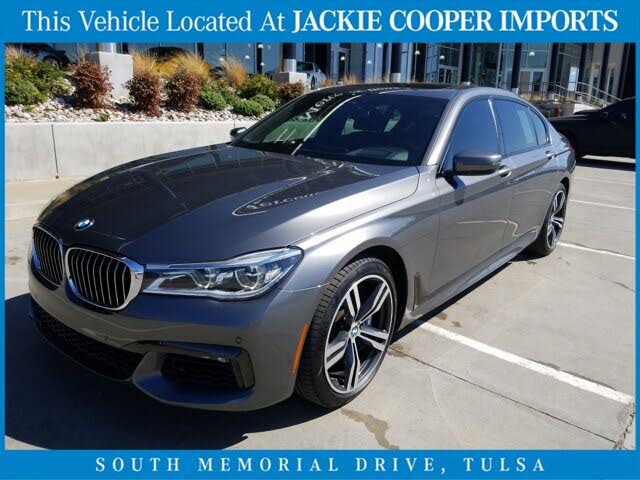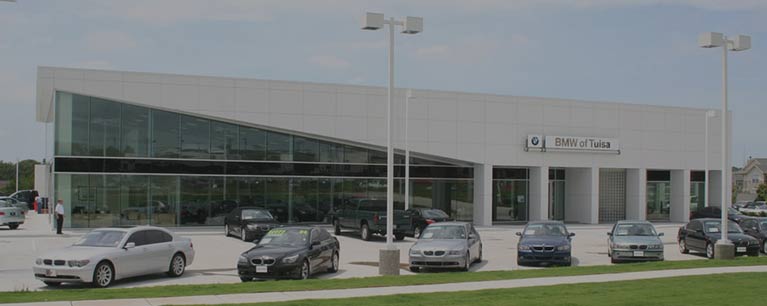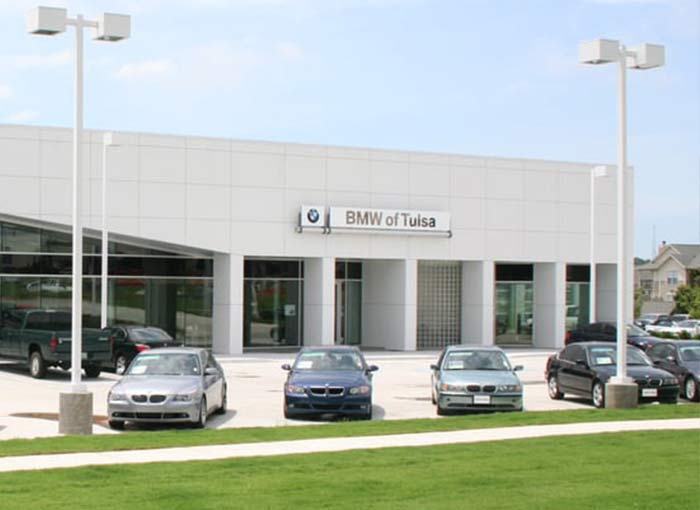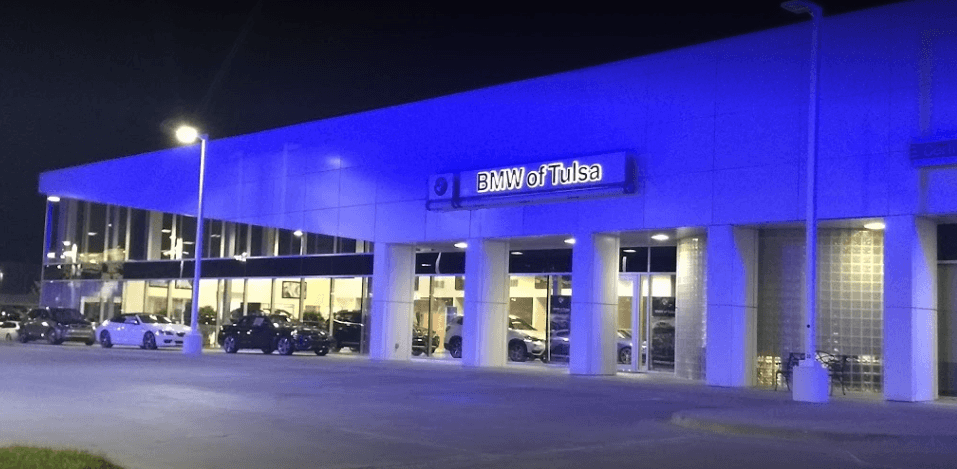Former South Carolina Gov. Carroll A. Campbell Jr., right, announces in 1992 BMW will build its first full manufacturing plant outside of Germany in Spartanburg, South Carolina. Next to Campbell is Bernd Pischetsrieder, at the time the board member in charge of production. He eventually became chairman of BMW a year later.(Photo: Courtesy of BMW/Fred Rollison, Photographer)
CONNECTTWEETLINKEDINEMAILMOREBMW’s first full manufacturing plant built outside of its native Germany was never supposed to come to Spartanburg County.
In fact, the German automaker was looking at four other sites: Phoenix, Arizona; Tulsa, Oklahoma; Omaha, Nebraska; and Anderson.
BMW officials held conversations about the future of the plant site behind closed doors and were tight-lipped about the substance of those talks. But those conversations eventually would lead to one of the most significant industrial investments and economic changes in South Carolina's history. This all happened at the same time thousands of residents in the Upstate were feeling their own economic uncertainty as textile mills that drove the state's economy for decades were closing down and leaving workers with few second options.
“Not a lot of people in the Upstate, or in South Carolina, or maybe in the country knew what was really going on,” said David Britt, a Spartanburg County Councilman since 1991, who remembers when BMW Group made the official announcement on June 23, 1992, that the company would build its first full manufacturing facility outside of Germany in Spartanburg County just off Interstate 85.
In another time, the region had two things going for it: peaches and textiles. But by the late 1980s to 1990, the textile industry, dominated by about five families, had all but collapsed and moved to international markets where wages were lower. The exodus left roughly 25,000 people without jobs.
It wasn’t just the mill jobs that were impacted. It was every store and every restaurant, along with schools, fire departments and recreational departments — all run by the mill communities.
“When it was gone, we were devastated,” Britt said.
Addy Sulley, an engineer by training and owner of Addy's Dutch Cafe and Restaurant in downtown Greenville, came to Greenville originally to work in its textile industry. He left that industry because of the downturn and went into the restaurant business in the 1980s.
"That was going under. I saw that – I put two and two together," Sulley said. "I saw Springs (Mill) and all these mills going under. I was sad for Greenville."
Buy PhotoThe remains of a textile mill is visible in Spartanburg on Thursday, June 15, 2017. (Photo: JOSH MORGAN/Staff)
From peaches and textilesEventually, BMW settled on Nebraska and South Carolina as final contenders.
But while officials in the Midwestern state were throwing incentives to bring the premier auto giant to its area, South Carolina was grappling with decades-old legislation that was engineered to keep outside industry from coming in.
“And when ... the tax laws were set up, (it) wasn’t to encourage industry to come here. It was to protect these two industries," Britt said from his office at Tindall Corporation in Spartanburg, down the road from Mayfair Mills.
Industry in South Carolina, Britt said, was taxed at 10.5 percent, commercial at 6 percent and residential at 4 percent, compared to neighboring North Carolina, where everything was taxed at 4 percent. That left companies being recruited by South Carolina the option of paying lower property taxes in neighboring states.
No one thought the textile industry would go belly-up, including former U.S. Secretary of Commerce Frederick B. Dent, then chairman of Mayfair Mills of Spartanburg, Britt said.
“This was an industry that had been protected, made the materials for our clothes, our sheetings, cars, all the liners that go in cars, nobody thought this industry could go away,” he said.
But as South Carolina appeared more realistic as a path for BMW, names like Greer Republican Sen. Verne Smith and Greenville County native and late Gov. Carroll Campbell Jr. moved in quickly.
“Gov. Campbell was such a good salesman, not only to BMW executives, but to people here in South Carolina, to the Legislature,” Britt said.
FacebookTwitterGoogle+LinkedInBMW through the years FullscreenPosted!A link has been posted to your Facebook feed.
Groundbreaking at BMW on May 24, 1993. Staff fileFullscreenBMW announces a 900 million dollar plant expansion, 300 jobs and introduces its 2,000,000 car made in the United States in 2012. Staff fileFullscreenFormer Gov. Carroll Campbell slides into a BMW after the press conference in 1992. Greenville News archivesFullscreenFormer Gov. Carroll Campbell shakes hands with BMW's Bernd Pischetsrieder in 1992. Greenville News archivesFullscreenThe BMW X6 in production at BMW Manufacturing Company Plant Spartanburg on 9/24/14. Submitted/ContributedFullscreenThe first beam at the BMW plant in Spartanburg, South Carolina, is signed in 1993. Courtesy of BMW/Fred Rollison, PhotographerFullscreenBMW employees sign their name on the first car assembled at the BMW plant in Spartanburg, South Carolina, a 318i, in September 1994. Courtesy of BMWFullscreenWorkers sign first steel beam at BMW site in 1993. Fred Rollison, PhotographerFullscreenOlympic signature car in 1996. Fred Rollison, PhotographerFullscreenBMW press conference in 1992. Submitted/Contributed/BMWFullscreenConstruction at the BMW plant continues on Monday, June 16, 2008. Staff fileFullscreenBMW assembly team members work on the 3.5 Millionth BMW produced in South Carolina. PicasaFullscreenFormer South Carolina Gov. Carroll A. Campbell Jr., right, announces in 1992 BMW will build its first full manufacturing plant outside of Germany in Spartanburg, South Carolina. Next to Campbell is Bernd Pischetsrieder, at the time the board member in charge of production. He eventually became chairman of BMW a year later. Courtesy of BMW/Fred Rollison, PhotographerFullscreenDr. Eberhard von Kuenheim, then chairman of the executive board of the BMW Group, announces via video conference in June 1992 that BMW will build its first full manufacturing site outside of Germany in Spartanburg, South Carolina. Courtesy of BMW/Fred Rollison, PhotographerFullscreenBMW's being loaded at The Port of Charleston on Aug. 24, 2014. Submitted/Contributed/APFullscreenA line of Z4 bodies sit waiting in the paint area of the BMW plant in May 2003. Staff file The Greenville News Copyright 2002;YesFullscreenPeople work in the X3 BMW plant in Greer on Thursday, November 10, 2011. Staff file Staff fileFullscreenA tour makes it way through the BMW plant in May 2003. Staff file The Greenville News Copyright 2002;YesFullscreenFormer Gov. Carroll Campbell speaks at the podium during the BMW announcement in 1992. BMW officials are seated at the table. Greenville News archivesFullscreenGrand opening ceremony in November 1994. Submitted/Contributed/BMWFullscreenGreer tourists tour the BMW plant as BMW Z4s are assembled on the line in 2002. Staff file The Greenville News Copyright 2002;YesFullscreenThe BMW X5 on the assembly line at the BMW plant on Dec. 15, 1999. Staff file The Greenville News Copyright 1999;YesFullscreenDr. Peter Holdmann, vice president, chassis systems worldwide of ZF Lemforder speaks to a group of employees and guests at the company's Duncan location Friday, April 25, 2008. Behind Holdmann is the 10 millionth axle system produced worldwide by ZF Lemforder. The axle was to be installed in a BMW Z4 Roadster at the BMW plant in Greer. Staff file THE GREENVILLE NEWSFullscreenAerial view of land in December 1992 before the BMW plant was built Submitted/Contributed/BMWFullscreenAerial view of Spartanburg County land in December 1992 before the BMW plant was built. Submitted/Contributed/BMWFullscreenEmployees sign the first BMW produced in the Upstate. Submitted/Contributed/BMWFullscreenA BMW drives behind the Olympic torch in 1996. Fred Rollison, PhotographerFullscreenScene from BMW press conference in 1992. Fred Rollison, PhotographerFullscreenBMW body shop in the 1990s Submitted/Contributed/BMWFullscreenBMW body shop in the 1990s. Submitted/Contributed/BMWFullscreenBMW in 1994 Submitted/Contributed/BMWFullscreenChad Johnson in 1994. Submitted/Contributed/BMWFullscreenA line of Z4 bodies sit waiting in the paint area of the BMW plant in May 2003. Staff file The Greenville News Copyright 2002;YesFullscreenInterested in this topic? You may also want to view these photo galleries:Replay1 of 332 of 333 of 334 of 335 of 336 of 337 of 338 of 339 of 3310 of 3311 of 3312 of 3313 of 3314 of 3315 of 3316 of 3317 of 3318 of 3319 of 3320 of 3321 of 3322 of 3323 of 3324 of 3325 of 3326 of 3327 of 3328 of 3329 of 3330 of 3331 of 3332 of 3333 of 33AutoplayShow ThumbnailsShow CaptionsLast SlideNext SlideBMW looks at SpartanburgIt was a meeting in 1989 that got the tire rolling on BMW's future in South Carolina.
Paul Foerster, a German native and then executive of Hoechst Celanese Corp., the largest German company operating in the state, traveled to Germany for discussions on business recruitment as a consultant with the State Development Board, now the S.C. Department of Commerce.
At dinner Foerster, who would also serve as honorary consul of the Federal Republic of Germany for the Upstate, met BMW's then-chairman Eberhard von Kuenheim and told him about the state's workforce and the strong technical school system.
Two years later, in 1991, everyone, including Campbell, was making the state's pitch to BMW.
More: BMW exports 2,000,000th vehicle from SC
BMW had several requirements: The company needed a flat 1,200 acres and a four-lane highway. Nebraska was telling BMW the state would put the plant site near an airfield and close to a rail system to help with exports, because BMW was talking about exporting 60 percent of the vehicles in, Britt said.
Then, roughly at the tail end of 1991, BMW executives flew into what is now Greenville-Spartanburg International Airport and decided if the plant were to be in South Carolina, it needed to be near the airport and visible from the road.
But there weren't 1,200 acres of open land in Spartanburg, most of which was covered by farmland and homes.
“When they changed from Anderson, it took, it threw South Carolina into a major tailspin, because we didn’t have 1,200 acres that the state could put their hands on. No one had 1,200 acres here,” Britt said.
BMW employees sign their name on the first car assembled at the BMW plant in Spartanburg, South Carolina, a 318i, in September 1994. (Photo: Courtesy of BMW)
Campbell approached textile magnate Roger Milliken, the longtime chairman of the airport commission, who initially wouldn't budge on selling any land at the airport. But back-and-forth negotiations, resulted in an agreement that leaders would find the 1,200 acres BMW needed, Britt said.
Campbell and Milliken brought in Spartanburg real estate company Johnson Development Inc., owned by George Dean Johnson, who was a former chairman of the State Development Board, to be the lead firm in getting options to buy the land for BMW.
“They were still negotiating with Nebraska, and it looked like Nebraska actually had it.”
David Britt, Spartanburg County Councilman"And they didn't have much time," Britt recalled. "This was being done in March and April of ’92. They (BMW executives) wouldn't make a commitment until property was acquired. They were still negotiating with Nebraska, and it looked like Nebraska actually had it."
A 1992 report in The Greenville News said Johnson Development sent letters to landowners saying the firm would not receive state money for its work on the project.
One owner, Ruby Davis, who owned a small brick house and acre lot on Brockman-McClimon Road, paid a commission of $7,500 to Lancaster Realty out of a sale price of $157,500.
The site in Spartanburg, South Carolina, of where BMW's manufacturing plant now sits. (Photo: Courtesy of BMW)
Some real estate brokers were charging sellers a commission of about 5 percent, in one sale making about $30,000, archives state. Others were charging landowners a 3 percent fee. If commissions averaged 3 to 4 percent, real estate agents could receive $1.1 million to $1.8 million or more in fees.
“All they said was that some people were coming from overseas,” Barbara Davis, Ruby Davis’ sister-in-law, told The News.
"Packaging that land was a Herculean task," Tucker Eskew, a spokesman for Gov. Campbell, told The New York Times in a 1992 article titled, "Making Millionaires of Southern Farmers."
Britt added: “There were stories that Gov. Campbell and his staff, they were on like a rollercoaster. They would get depressed, like we lost this job, we lost this huge project."
“We let Gov. Campbell lead the dance and we (Spartanburg County Council) followed his lead.”
David BrittAnd while Nebraska was offering about $100 million in incentives, South Carolina, between Spartanburg County and state agencies did, too.
In the end it was likely three factors that sold BMW on the Upstate, Britt said: the thousands of willing people ready to get back to work, the state’s support of technical schools and programs, and the Port of Charleston.
"We let Gov. Campbell lead the dance and we (Spartanburg County Council) followed his lead," he said.
The first beam at the BMW plant in Spartanburg, South Carolina, is signed in 1993. (Photo: Courtesy of BMW/Fred Rollison, Photographer)
In June 1992, then chairman of the Spartanburg Chamber of Commerce, Lane Fowler, told The Greenville News he was just one of the people who organized the idea on behalf of Spartanburg, but “the governor was the quarterback.”
The BMW Board would vote on South Carolina just days before it told South Carolina officials on June 22. The official announcement to the public was the next day.
“The announcement was at Greenville-Spartanburg Airport. They had it early in the morning,” recalled Steve Wilson, media communications specialist at BMW in Spartanburg County, who at the time was a photojournalist for WYFF TV. “The chairman of BMW at the time was Eberhard von Kuenheim, and he could not be here at that time, so they did a really odd thing back in 1992, they did a video conference. Dr. von Kuenheim made the announcement to a group of 100, 200 people at GSP airport.”
Dr. Eberhard von Kuenheim, then chairman of the executive board of the BMW Group, announces via video conference in June 1992 that BMW will build its first full manufacturing site outside of Germany in Spartanburg, South Carolina. (Photo: Courtesy of BMW/Fred Rollison, Photographer)
A unanimous decision by Spartanburg County Council would kick off a weighty incentive package for the company – money combined between Spartanburg County, the state, the S.C. Ports Authority, Greenville Spartanburg Airport and others.
GSP said it would spend $40 million to extend a runway to accommodate a fully-loaded Boeing 747 aircraft. The state offered $25 million for land, $5 million came from the Ports Authority and $10 million was offered to improve roads and sewers, according to archives.
The city of Spartanburg paid $200,000 for temporary office space for two years, roughly 50,000 square feet. Spartanburg County also offered to buy a $1.8 million building for temporary offices on the plant site and local businesses raised more than $2.7 million for training.
In the company’s initial announcement, BMW was to invest $600 million, create up to 2,000 jobs and attract at least nine suppliers to the state in less than 10 years. It has far exceeded those goals.
BMW: By the numbersCreate your own infographics
Not all were overjoyed with BMW in Spartanburg. Britt recalled dealing with various naysayers, even opinionated news articles that doubted BMW's investment.
“I remember somebody writing (in a South Carolina newspaper), we may never know if we’re gonna get our money back off this $100 million incentive package,” Britt said. “It may be years before we'll know.”
He recalled two battles that occurred over leasing cars to BMW employees, which went as far as the Legislature. And when the city of Greer tried to annex the property for property taxes, Gov. Campbell walked into Greer City Hall and shut the attempt down.
More: New BMW chief considers company 'local'
More: Why companies moving to Southeast? They want proximity to their customers, German consul says
Since BMW’s announcement 25 years ago, the German automaker has invested at least $9 billion in Spartanburg alone and employs close to 9,000 workers. Indirectly, Britt said, BMW has helped spur the creation of at least 25,000 to 35,000 jobs spread across most of the state’s 46 counties.
“I think it was the governor of Nebraska who said, ‘If only we could've had the Atlantic Ocean at our borders,’” Wilson said. “Because South Carolina, one of the primary reasons was the infrastructure and the deep water port that’s only three hours or so away, because we export now 70 percent of everything we build.”
BMW’s lasting impactThe BMW effect on the Upstate and the entire state of South Carolina is hard to miss.
While billions of dollars have been funneled directly and indirectly into the state, the cultural influence of BMW has also spread across the region. It introduced the Upstate to Germany, especially European business owners looking for a place to work and live. Locals have benefited from European tastes that have come with the people working for those companies.
The most recent economic study done by the University of South Carolina Darla Moore School of Business, reported BMW’s impact corresponds to 30,777 jobs and $1.8 billion in labor income for South Carolina that would not exist otherwise.
For every job created at the Spartanburg County plant, an additional three jobs are created elsewhere in the state, the report said.
“We went from being a Southern textile community to being an international mecca for industry,” Britt said. He pointed at tire companies and aerospace company Boeing in North Charleston all being a result of BMW.
“We went from being a Southern textile community to being an international mecca for industry.”
David Britt“Without it, I mean it is scary to think, not only (what) Spartanburg would look like, but what South Carolina would look like.”
Butch Kirven, Greenville County Council chair, said his county has benefited greatly from BMW as far as companies and suppliers that have picked to locate in the region.
"We continue to work with companies that come here because of BMW," he said. "And actually BMW, actually, introduced an automotive sector to this region of the Southeast, with the Volvo plant (in Berkeley County), Clemson's ICAR (International Center for Automotive Research)."
Though BMW never annexed into Greer, Mayor Rick Danner said the company opening shop in the Upstate put the region on the map worldwide.
"(BMW's) presence speaks volumes to the international business community to how they have been welcomed and successful here," Danner said.
The plant produces more than 1,400 cars per day, and last year made 411,711 vehicles — its largest annual production volume in the plant’s history. BMW produced its first car at the plant in September 1994. Since then, the plant has produced more than 3.7 million vehicles.
Buy PhotoBMW X5 vehicles roll off the assembly line at the BMW manufacturing facility in Spartanburg on Wednesday, June 14, 2017. (Photo: JOSH MORGAN/Staff)
The lasting economic impact also can be traced to the Greenville-Spartanburg International Airport as well as the Inland Port in Greer that opened in 2013 and ships parts and finished products for BMW and other companies between Greer and the Port of Charleston.
The Inland Port also takes built and painted bodies, helping to ship those bodies to other countries that use their own or NAFTA suppliers to assemble their car.
While the Port of Charleston is the primary port for BMW, the company also uses ports in Jacksonville and Miami, where exports head to between 130 and 140 countries worldwide.
Jim Newsome, president and CEO of the S.C. Ports Authority, said BMW operations in South Carolina are a tremendous asset to the port and a key driver in automotive manufacturing for both import and export volume growth. BMW exported more than $10.5 billion in products last year.
“BMW’s multiple expansions have been exciting opportunities for the port, and we value our role in its international supply chain. We look forward to a strong continued partnership and congratulate BMW on 25 years in South Carolina,” Newsome said.
S.C. Commerce Secretary Bobby Hitt, who spent 18 years heading public affairs at BMW before joining the the department, said the German automaker's footprint in the state was a "fundamental game changer" that helped to diversify South Carolina's workforce, from just agriculture and textiles to automotive and aviation, big farmer and tourism.
"It basically moved us from being sort of generic state to a name-brand state," he said. "What BMW did was demonstrate the capability of the workforce in this state, and from there, we have just moved forward, forward and forward."
Related: McCraw oversaw growth at BMW from a car every three days to one every minute
CONNECTTWEETLINKEDINEMAILMORERead or Share this story: Media
BMW 18 Series 1845i for Sale in Tulsa OK CarGurus

Used BMW X18 for Sale in Tulsa OK CarGurus Used bmw Bmw x18 Bmw

BMW of Tulsa BMW Dealer Tulsa OK
BMW Of Tulsa Tulsa OK Cars

BMW 18 Series for Sale in Tulsa OK BMW of Tulsa

New BMW Cars For Sale In Tulsa OK BMW of Tulsa

BMW PreOwned Inventory BMW of Tulsa Tulsa

BMW X18 Colors For 18 BMW Tulsa

188 BMW X18

BMW of Tulsa BMW Dealer Tulsa OK

New BMW X18 in Tulsa BMW of Tulsa

New BMW Cars For Sale In Tulsa OK BMW of Tulsa

Why Choose BMW of Tulsa New and PreOwned BMW Dealer

Used Cars For Sale In Tulsa OK BMW of Tulsa

BMW OF TULSA 18 Photos amp 18 Reviews Auto Repair 18 South

18 BMW 18 Series

Executive Demo Vehicles BMW of Tulsa

Used BMW for Sale in Tulsa OK Edmunds